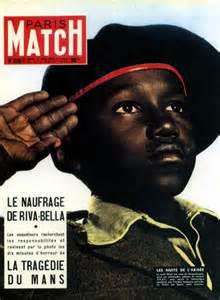Essay:How does meaning get into the image? Where does it end? And if it ends, what is there beyond? Explain and critique this question posted by Roland Barthes using a range of design works of your choice as examples, making use of other writers works to expand the discussion.
The linguistic message is indicated in a large majority of images that presented communication in our culture. The interpretation of meaning from a piece of graphic design involves a complex interaction of factors that relating to the creator of the representation. In fact, communication is the construction and exchange of meanings as the conveys of a message through the communication channel from sender to receiver. (1) The sender is the one who encodes verbal or nonverbal information in culturally negotiated form. Besides, the interpreter decodes and relays past experiences and context to a determination of its significance. In this case, in order to comprehend the level of meaning from message, it required the knowledge bound up with our perception.
(2) Refer to a French linguist Roland Barthes’s essay ‘Rhetoric of the image’, he examined and analysed about the symbolic message and the literal message by remarking whether the analogical imitation successfully functioned in an image, and how does it ideologically transmits an educational message to society. (3) He had demonstrated an example of a piece of advertising poster of a pasta brand 'Panzani' which imported from Italy to France. He intended to associate with the concepts of sign and codes, moreover to acknowledge along with two theoretical distinctions which are the connotation and denotation.
(4) Advertisement of Panzani
In regard to decode the image above, it is an unity of signifier and signified. (5) In definition, signifier is simply the configuration of sound elements or other linguistic symbols that represent a word or other unit in a language as we perceive it. By signified is all about the associated concepts denoted by a sign. As so to analysis from this image, the caption and the labels on the products signifier 'Panzani' the brand itself, and signifier the foods contain inside the packages. (6) On the other hands, the half-open bag signified return from market; tomatoes and peppers signified Italian; the whole collection of objects signified a total culinary service. The overall composition is reminiscent of the notion of life in Italy. (7) Basically, we assign significance to the placement, orientation, and perceived hierarchy among elements within the visual field.
In addition to the denotative and connotative content of the subject matter, meaning can be communicated by the representational style through which it is rendered. (8) Connotation enables the individual to be constructed as a member of a social group because it is where the values and beliefs of a culture interact with texts, images and layouts of graphic design. Moreover, denotation is the meaning of an image and comprehend the ‘literal’ meaning of a piece of graphic design. Therefore, it emblems the interface between the individual and a culture.
(9) Attention Sign of Nuclear
As we look at this sign, the first impression pop up in mind probably are ‘Danger’, ‘Nuclear’, this is called ‘the first degree of intelligibility’. In this example, we can see the relationship between the physical attributes of the sign and what it stands for is ‘Arbitrary’. (10) We sort stimuli into categories in our minds in ways that allow us to recall them when confronted with new stimuli. In this case, we recognize it as the concept of ‘danger’ it is because we had educated about different implication of public sign in our past experience. Such as a triangle sign represent ‘attention’ and signified the idea of ‘be careful, it is dangerous’. (11) The representation and its composition carry meaning over and above the literal content. This ability to read abstract symbols lead us to assign meaning to a new form that previously had no meaning to the arbitrariness of signs.
(8) A sign distinguish ‘icon’, index’, ‘symbol’, it makes sense only within a coded. For Semiological theories, signs and codes are the twin cultural bases of messages and meanings. (12) Semiotics is the study of the life of signs and was developed in Switzerland by Ferdinand de Saussure and in America by Charles Sanders Peirce at the start of the twentieth century. In addition, communication is the construction and exchange of meanings for semiology and meaning are explained in terms of signs and codes. Furthermore, when we perceive a message from a sign, it differentiates as reflective approach, intentional approach and constructionist approach. However, it also related to the context of culture. (13) ’Signs rely heavily on the cultural and contextual situations in which they reside. The audience will interpret the meaning of an image based on their own experiences and relationships they bring to the image.’ pointed out by Roland Barthes. In order to fully understand the intent of the image, we have to view the image through a specific cultural context.
(14) Cover of Paris Match 1955
This is a cover page of the magazine ‘Paris-Match.’. Clearly, we can see a young black soldier in French uniform saluting in the picture, but simultaneously, there are different observation and opinion about this piece of photograph. (15) Roland Barthes analysis this cover with post-modern notion that images can function as myth. In an environment of equatorial Africa, a young French rule. (16) That was the time when the French occupied colonies in western, northern and central Africa until 1960. If a black patriot shows respect to the French flag, then how can the country’s occupation of an African nation be seen as morally wrong? The denotative content of a young, black French soldier signified by his uniform, saluting a French flag that is outside the picture empire is supported by black and white alike and is not a colonial oppressor in equatorial Africa.
Consequently, its dishonesty is trying to pass off an arbitrary sign as a natural and analogical one. (17) For the audience of the time were to imposes and interpret the idea of this image as ‘French imperialism.’. In fact, the actual ability to acquire things that fit with our perception of right and inevitable values and social status always seems slightly out of reach. We continue to consume in order to achieve the social status we imagine as an appropriate and achievable personal identity. There is a structural relationship between culture and the material aspects of society in this image.
This image involved metaphor in linguistic message. (18) Yet, metaphor distinguish various ways that not to mean what literally say, such as synecdoche, bizarre metaphors, clever metonyms and genuine ironies. Analytically, graphic design metaphorical in two ways or on two levels. Both types of meaning required some cultural knowledge or membership in order to be constructed and understood, but connotation required far more than denotation. (19) Barthes identifies this denotative image and proved its false nature, as all images are embedded with codes and meaning.
(10) Two glasses of water
In order to established communication as the production and exchange of messages, the notion of meaning require in more detail. (20) In linguistic message, the text and image in a piece of graphic design and the function of the text is first to anchor the meaning of the image and second to advance the action or scene appearing in the image. For instance, this two pictures actually are the same glass of pure water, however, with the text below, we changed our anticipation of the image just by looking at the text. The glass of water signifier ‘water’, however the meaning of the text signified the drink is poison, not sure can we drink it. The relationship between words and images are extremely significant. (21) The relation of words and images has been considered under the heading of layout and composition, the first operates on the denotative level and limits denotative meaning. On this level, the text fixe the meaning of an image by answering the question ‘What is it?’ The connotational meaning of an image is the answer to the question 'What does this image make you feel?' (2) It will consider two of the main ways in which the relation between image and text has been conceptualized, anchorage and relay.
Text changes perception of images. (22) Images on their own are constantly very open to interpretation that they invalid to provide a stable meaning for the reader to grasp. This is why we might need to supplement them with words. (10) Pieces of text can simplify, complicate, elaborate, amplify, confirm, contradict, deny, restate and help to define different sorts of meanings when they interact with images and objects. The text functions to limit those interpretations and they aid us in anchoring images. (23) Graphic design is a rich source of these ideological signifiers, every graphic text, image and layout is a visual signifier of ideological beliefs and values in communication.
To be intentional, as some images straightaway provides a series of discontinuous signs, designer aimed to keep the image simple and clear thus to limit the possibilities of continuous sign. Nevertheless, this is depended on which area of design it is.
(24) "We Can Do It!" 1943
(25) ’We can do it’ is an American wartime propaganda poster produced by J.Howard Miller in 1943. The main focus of this picture is the woman flexing her arm, which is the signifier. She is wearing a blue shirt with a red bandanna, which sets her apart from the yellow background. (26) The viewer’s eyes are first drawn to the woman’s face, then to her powerful arm, then following the arm up to the caption, and finally back to the woman’s face. The woman is not smiling but rather has a look of strength and power, as if she is challenging the viewer. Publicity campaigns were aimed at encouraging women who had never before held jobs to join the workforce. This image associated with the concept of women can also be ‘strong’, ‘powerful’, which also signified ‘independent’ and involves ‘feminism’. Woman were portrayed as attractive, confident, and resolved to do their part to win the war.
(27) This poster then had brought out a vital impact and inspiration to the public, lots of latest graphic designers commenced to modify and develop the design by altering the contents of texts, changed the color background, or even added or replaced another characters to the image. In this case, the connotation preserved, but the denotation of this image alternated as another implication. (28) The photograph replicates and congruent with our experience of the object in the real world. In consequence, all images have many potential interpretations, there could be endless of possibilities by modifying the meaning of an image.
In conclusion, in terms of the relation to linguistic message indicated in our culture, the relation has been considered in terms of various concepts, the denotation, connotation, anchorage and relay. These terms explained and used to demonstrate the connection between culture and meaning having introduced and explored from images. To be clear, it is essential to show how one thing means other. Graphic design transmit something from one context and places it in another, this is merely by representing an object or an idea in linguistic message. By looking at the examples above, it is interesting to see that different images possess several levels of theoretical distinctions. All images had its signifier and signified, however some of their meaning are straightforward get into images, and some included metaphor and numerous potential interpretations in one image.
(20) No matter in linguistic message or symbolic message or the literal message, they are all functioned with the message cycle system, (8) which process from the ‘Consumption of Culture’ to ‘Creation’, ‘Reproduction’ to ‘distribution’, ‘Reception by individuals’ back to ‘Consumption of culture.’. (29) Once the ideas occur, the designers code the message, then another person perceived the message and decoded it, then finally understood the message by different implication. In order to convey one message successfully to other, these stages are required in the communication language progresses. (30) ‘The most important thing, however, at least for the moment, is not to inventorize the connotators but to understand that in the total image they constitute discontinuous or better still scattered traits.’ quoted by Barthes. The interpretation of how meaning get into image is not only about the theoretical distinctions or the message cycle, but also related to the knowledge that instructed with our perception and the cultural phenomenon of its indicative of the construction and reproduction of a cultural group of beliefs and values.





Signifier? Signified?
Connotation?
Denotation?
Cultural beliefs?
Values?
Oh my Goddddd;O
I don't wanna read this
I don't wanna read this
I don't wanna read this
I sweared
Let's ignore these words.
< run and return page